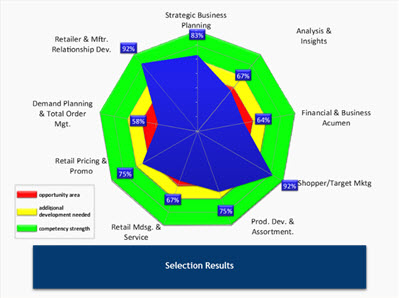 According to Michael Watkins’ book The First 90 days, it takes about 3 ½ months before a new leader starts to add value. Inherent in this observation is the recognition that it takes time for a new employee to get to know new processes, systems, customers, etc. Yet companies frequently are not as prepared as they could be for the new hire to come aboard. Indeed, 66% of companies fail to leverage what they learned about the new hire during the selection process to help inform his/her onboarding and development1.
According to Michael Watkins’ book The First 90 days, it takes about 3 ½ months before a new leader starts to add value. Inherent in this observation is the recognition that it takes time for a new employee to get to know new processes, systems, customers, etc. Yet companies frequently are not as prepared as they could be for the new hire to come aboard. Indeed, 66% of companies fail to leverage what they learned about the new hire during the selection process to help inform his/her onboarding and development1.
So why do companies fail to use data from the hiring process to inform downstream HR processes? A few reasons come to mind:
- There is insufficient data to leverage: companies are not systematically collecting data on candidates’ performance during the hiring process.
- Many times HR is fragmented into silos such as recruiting, performance management, training, etc. which can prevent sharing and cross-pollination. This makes sense from an efficiency perspective but what’s missing are formal mechanisms connecting recruiting to content and services beyond hiring.
- In terms of content I am referring to pre-packaged training and development linked to evaluation criteria (e.g., functional competencies). In other words, what are the experiences, resources, classes, etc. connected to each competency that improve performance?
- And finally, there is typically no ongoing research program into the efficiency and effectiveness of the talent selection process.

In terms of pre-packaged, pre-linked content I recommend that companies consider onboarding and development in a 70/20/10 lens where:
- 10% is focused on identifying key stakeholders, mentors, and peer buddies who facilitate introductions, relationships and cultural integration;
- 20% is focused on identifying required technical learning via workshops and e-classes and follow-up support and reinforcement by the manager; and
- 70% is focused on on-the-job application via targeted assignments and manager-reviewed outputs.
What might this look like? Here I am presenting the candidate scorecard from the July blog post on Objective Decision Making:
We’ll use Terry Collins as an example. His behavioral interview score fell into the yellow bucket. For illustrative purposes, let’s assume that he struggled with some of the functional competencies in the interview.
We can use data at a competency level to describe his performance graphically. In the graphic below, Retailer and Manufacturer Relationship Development and Shopper/Target Marketing are competency strengths – perhaps those could be leveraged by having Terry deliver a presentation on what he has done in these areas.
 Demand Planning & Total Order Management, Analysis & Insights and Financial & Business Acumen are clear opportunities for development. These should specifically be targeted as part of the onboarding process.
Demand Planning & Total Order Management, Analysis & Insights and Financial & Business Acumen are clear opportunities for development. These should specifically be targeted as part of the onboarding process.
The next step then is to create a personalized onboarding plan for the first 5 to 6 months where tasks are mapped out for Terry to perform, including courses, meetings, manager touch-bases, etc. as well as dates and expected outcomes or deliverables. The idea is to design a tailored plan that leverages the new hire’s strengths as well as addresses gaps before he or she starts.
In next month’s blog, I will discuss the steps companies can take to assess their selection processes. As always, I encourage you to leave your comments and questions in the text box below and to participate in a 3-minute anonymous survey – both of which will help drive discussion and inform subsequent blog posts.
To discuss your specific talent selection issues and challenges, please contact me at 203-817-7522.
[1] Global Selection Forecast Report (2012)



A critical question is, how to onboard new people in key roles quickly and effectively? Working at a combination of the individual level, with coaching/mentoring, and the team level, to integrate the work of the role, seems to be the key.
Hi Patrick – I totally agree. Onboarding is frequently fumbled because hiring managers do not have a plan. Onboarding needs to start weeks in advance of the new hire’s first day (e.g., identify stakeholders, create communications, day #1 and week #1 agendas). Formal plans to get to know the team as well as customers. Use hiring results to leverage strengths and close gaps (e.g., through training, mentoring).
Cheers, Robert
Nice article, model, and process!
I think an overlooked area for many companies is the “knowledge sharing/intellectual capital (IC) value” of employees. Perhaps a blended method including social networking analysis (internally) could be intermixed with this method to identify the existing high value employees (those people that other people go to internally to solve problems)… to formulate an even stronger method for delivering value sooner with new employees (ie, partner high IC employees with new employees immediately).
(Seems archaic that the discipline of talent recruitment has yet to formally incorporate the leveraging of high IC employees into a mainstream practice! ie, What’s the employee IC value score?)
And finally, perhaps this was addressed in the first article: a corporate culture needs to be healthy to ensure a smooth transition. Do methods exist to assess the culture and employees that buy-in and support new talent vs possible stonewallers that could impede the process? (sorry to end on a sour note!) Industrial Organization Psychologists will work individually coaching… but that’s usually at the top level. Is there value in deriving a method at director level and mid-level within companies to address possible hurdles?
Great article again!
Best,
Andrea